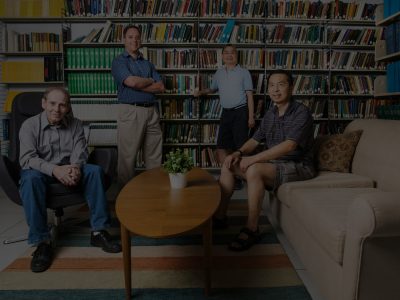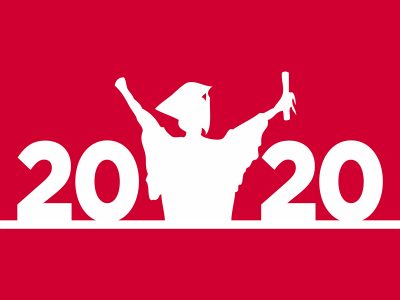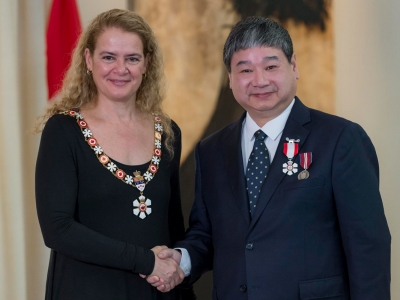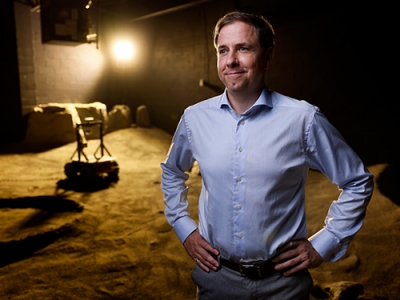By Dan Rubinstein
As the enormous particle accelerator just outside Geneva, Switzerland, came back to life this month after a planned two-year shutdown, Carleton University physicist Manuella Vincter was spending a few shifts in the control room.
The Large Hadron Collider (LHC), which is buried in a circular tunnel with a 27-kilometre circumference and famously confirmed the existence of the missing-link Higgs boson particle in its first round of research, is now nearly twice as powerful.
Vincter isn’t sure what will happen – which makes the world’s biggest science experiment even more exciting.
The 2012 discovery of the Higgs boson, a breakthrough five decades in the making, completed the so-called Standard Model of particle physics, a set of basic particles and interactions that describes the fundamental structure of matter.
“We knew where to look, and we saw it,” says Vincter. “If the Standard Model is correct, we don’t really know what we will see next. We’re going into the era of New Physics.”
Vincter is part of a Carleton contingent of four professors, three postdoctoral students and about a half-dozen graduate students who focus on ATLAS, a multinational detector project at the LHC with significant Canadian contributions.
She has spent the past year at the European Organization for Nuclear Research (CERN) facility in Switzerland, analyzing data from the first three years of smashing protons together at extremely high speeds, and getting ready for uncharted territory as upgrades increase the energy the LHC can produce from three to 13 tera-electron volts.
The new experiments, which recently began after a couple hours of successful test collisions in late May, could reveal more Higgs bosons or other exotic particles, says Vincter. They may confirm the existence of dark matter — matter that exerts a gravitational pull but cannot be seen — or elucidate the supersymmetry theory, which suggests that every known particle has a mirror particle that can only be observed at a very high energy. Black holes and alternative dimensions, phenomena typically associated with science fiction, are also legitimate considerations at CERN.
“There are so many possibilities,” says Vincter, explaining that when trains of protons collide at high speeds at the LHC, the resulting surge of energy can hold evidence of new particles. Researchers can’t see these particles, which are very short lived, but the data collected by detectors such as ATLAS — a continuous stream of ones and zeros that algorithms convert into representations of electrons and other “physics objects” — can be conclusively interpreted. “We know there’s dark matter out there in the universe,” says Vincter. “We don’t know what it is. We don’t know if we’ll see it at the LHC. But we could, and that gives me hope.”
Nearly 3,000 scientists work on ATLAS alone, teams of roughly 10 to 30 people grouped around common research interests. Everybody has free access to all data generated, part of an unprecedented international collaboration that has attracted sociologists who study human dynamics.
In Canada, in addition to developing software and analyzing data, Carleton has played a key role by constructing hardware for ATLAS in tandem with other universities. Led by Physics Department Chair Gerald Oakham, who has spent much of his career searching for the Higgs boson, components for the first phase of research were built on campus at the Herzberg Laboratories. Now the race is on to build new components in time for installation during the next scheduled shutdown in 2018. These upgrades will help ATLAS select “interesting” events to scrutinize from the huge volume of data generated by the LHC.
The work will begin at TRIUMF, Canada’s national laboratory for particle and nuclear physics, on the University of British Columbia campus. After contributions from Simon Fraser University and the University of Victoria, the units will be shipped to Carleton for assembly, and then onward to McGill for testing before being sent to Europe, where they will be attached to detectors made in China, Chile and Israel and mounted onto the New Muon Small Wheel, which will have a diameter of nine metres.
“It’s a nice little bit of logistics,” says Oakham, who is currently sourcing parts with colleagues from other countries. “These experiments are very large and complicated. Particle physicists have been doing this kind of thing for quite some time, and the collaborations keep getting bigger.”
A grant from the Natural Sciences and Engineering Research Council of Canada supported the acquisition of equipment and infrastructure to build the new detectors, and in late May the Canada Foundation for Innovation announced it is providing Carleton with an additional $6 million for work on ATLAS.
Beyond taking a stab at unlocking the secrets of the universe, one of the benefits of this project is that it allows students to participate in the construction of new hardware. “That’s important for a university,” says Oakham. “Our job is to train people.”
Carleton master’s student Stephen Weber arrived at CERN just as the LHC was getting primed for round two. “There’s a lot of information to digest,” he says, “but I wouldn’t say it’s overwhelming. CERN feels a lot like a university, and we all speak ‘physics,’ so it’s not difficult to work with anyone.”
There is a chance, of course, that the next three years at CERN will yield no breakthroughs, just a lot of data. Vincter would be OK with that. She enjoys the precision and minutiae of data analysis. Although surprises are the most fun.
“When you buy a box of Cracker Jack, the popcorn is tasty, and you enjoy eating it,” she says. “But what you really want is the treat that’s somewhere inside the box.”



